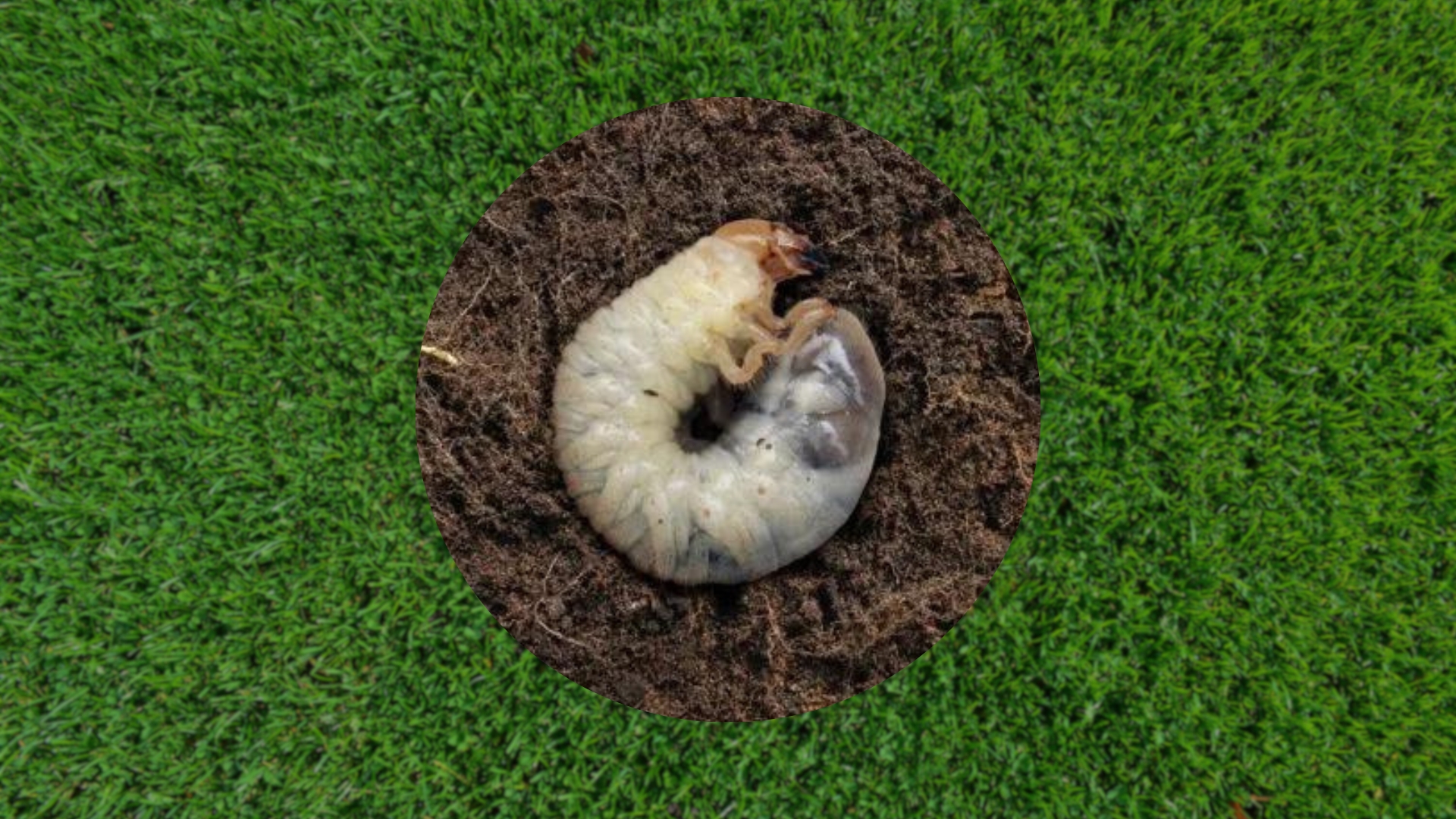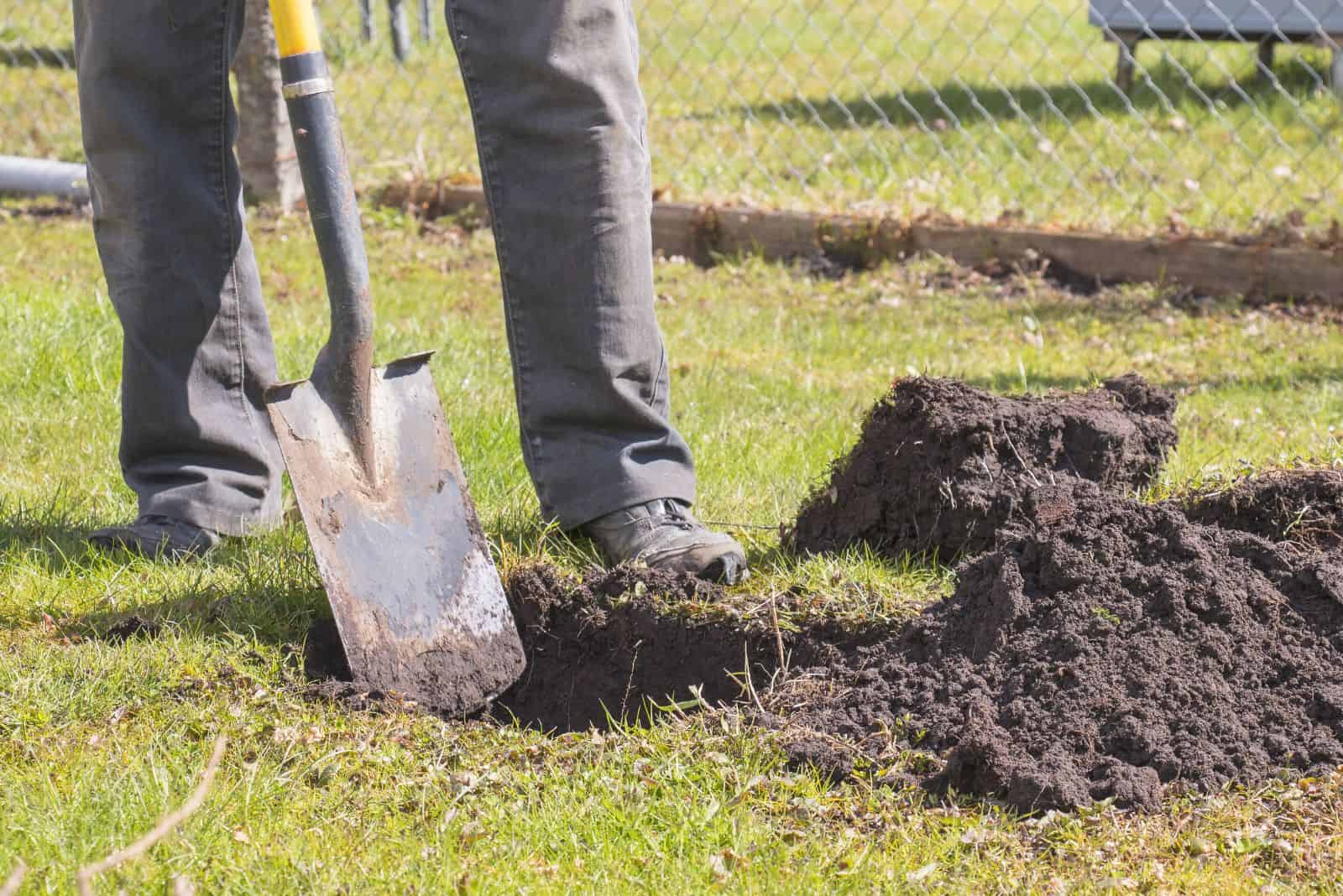Growing the perfect lawn is a suburban dream. But there are always things that prevent us from achieving it.
I’m experiencing some grub troubles this year, and what they do is just mean!
Imagine waking up one day just to find brown patches of grass, spongy areas, moths, and other creatures all over the place.
And these are just some of the issues caused by these nuisances!
But don’t worry! I’m here to share some insights into the signs of grubs in lawn, offer some tips for removing them, and advise you on what to do with your lawn afterward.
So let’s get started!
1. You Can See The Grubs
The surest sign that you have grubs in your lawn is if you can see them. However, noticing these larvae will require a little work on your part.
Grubs are mostly active and close to the surface in August and September, so inspect the soil then.
Take a shovel and dig up a square 12 inches wide and 2–4 inches deep. Do this in a couple of spaces so that you can get a better grasp of how severe your grub trouble is.
Pull the section you’ve taken out apart and look for larvae. If there are 5 or fewer grubs in each or some of the samples, you have nothing to worry about. This is completely normal.
However, if there are more than 5 larvae in your samples, you should devise a plan to eradicate them.
2. Moth Infestation
If you notice an unusually high number of moths and beetles lurking around your lawn, be prepared for a hard time.
For instance, Japanese beetles go underground at night, where they make nests and lay eggs, which then grow into grubs.
Therefore, it’s important to get rid of the moths and beetles before they multiply and lay larvae that can damage your lawn. You can do this by laying out traps, using nematodes, etc.
3. Dead Patches Of Grass
Grubs feed on the roots of your grass, which can cause all sorts of problems, including yellowing, browning, and dead patches appearing all over your lawn. (1)
However, if you care for your lawn properly and keep it safe from environmental stressors, the eaten roots won’t affect your lawn’s healthy, green foliage. (2)
I know this seems strange, but there is some research that suggests this could be because damaged roots absorb more nutrients and moisture.
4. Spongy Areas
Sometimes, grubs feeding on your grass’s roots doesn’t necessarily affect your lawn’s color.
However, a rapid decline in your lawn likely signifies that there is some kind of larvae feeding on the grass’s roots. One of these symptoms includes a spongy feel when you walk over it. (3)
These insects will eat the roots, and the underground soil will lose its structure.
5. Turf Detachment
If you notice spongy areas on your lawn and don’t act fast, the issue will only get worse. The grubs will spread and continue feeding on the roots, wreaking havoc wherever they go.
At this point, you’ll be able to roll up the turf like a rug and discover the larvae just below the surface.
Fixing this kind of damage is tiring, time-consuming, and not to mention expensive.
6. Critter Invasion
One of the signs that your lawn might be infested with grubs is the presence of an unusually high number of various critters. By this, I mean plenty of birds, ants, armadillos, raccoons, skunks, and moles suddenly invading your lawn.
It’s not quite the advantage you might think. These animals do feed on grubs; however, they can also make holes in your lawn and dig through your trash and compost.
And ants will dig underground tunnels and loosen your spongy grass even more! Luckily you can destroy ants with neem oil. As for the larger creatures, I’d call animal services.
7. Vulnerability To Stressors
Since grubs feed on grass roots, they make the entire plant more vulnerable to drought, heat, nutrient deficiencies, etc.
This is because the roots will be shorter or become damaged and won’t be able to properly absorb water and minerals. However, if you increase watering and fertilizing, you might be able to mitigate this issue.
Getting Rid Of Grubs In Your Lawn
Now that you know all the terrible things that can happen to your lawn because of grubs, let’s learn some ways to get rid of them.
You can use natural or chemical means to eradicate them – it’s really up to you to decide which method suits you best.
Naturally
Natural predators – Grubs have many bird predators, such as robins, blue jays, etc. However, you should be aware that they can make gaps and pockets in your lawn. But if you don’t mind this issue, then you can set up birdbaths, feeders, and houses to invite them into your yard.
Reduce moisture – Larvae need plenty of water to survive, so limiting it will create unfavorable conditions for eggs and grubs. (4) Therefore, reducing watering in June and July when beetles lay eggs and larvae hatch could prevent issues in the future – if your grass can handle it.
Neem oil – This organic pesticide can kill grubs in their early phases but doesn’t have much effect on adult beetles. (5) However, if you spray your grass with a solution of neem and water in June and July when eggs and larvae occur, you’ll be able to mitigate the problem.
Borax – This compound is a great way to kill grubs, but it can destroy your lawn in the process. Therefore, don’t use it often and mix it with a small amount of warm water, applying the solution wherever you suspect larval activity.
Dethatching or aerating lawn – Grubs love unaerated and thatched lawns, so don’t forget to dethatch and aerate your lawn every once in a while. And if you want to make your lawn bounce back faster, there are a couple of things to do after lawn aeration, such as fertilizing, overseeding, etc.
Nematodes – These tiny beneficial worms will be the end of grubs in no time. Get them at your garden center, release them into the ground, and let them do their job. However, you’ll have to apply them 2–3 times a year for the next three years for your lawn to be free from grubs.
Milky spore – Applying milky spore disease is a great and organic way of destroying Japanese beetle grubs. However, it can only kill this strain as other grubs already have this bacteria and are immune to the disease. (6)
Just like with nematodes, you’ll have to use the milky spore strain a couple of times per year for the next three years for them to take effect. However, the disease will keep your lawn safe from Japanese beetle grubs for the next 15–20 years, so it’s worth a shot.
Chemically
If you can’t wait the time it takes for natural methods to work, you can always turn to chemical solutions: pesticides.
Look for products that contain carbaryl, isazophos, diazinon, and trichlorfon. These compounds can reduce the grub population without damaging your grass. (7)
And if you want to prevent the larvae from damaging your lawn, products containing imidacloprid, thiamethoxam, or clothianidin can keep your lawn safe.
Here are some more tips for identifying and removing grubs with pesticides:
Post-Grub Lawn Care
Now that you’ve exterminated the grubs in your lawn, where do you go from here?
Well, you can do a couple of things to renew your grass and make it as thick and green as it was before.
The first thing you can do is overseed it with a mixture of seeds. As the new grass grows, it’ll fill up the dead patches, and you’ll forget about your larval problem.
The next thing to keep in mind is to water your grass sparingly. This technique will keep the soil moist just enough for the seeds to germinate but won’t create a breeding ground for new grubs. Remember, these pests love moisture, so reduce watering afterward.
And the last step is no walking! This includes you, your children, and your pets. There are a couple of rules for walking on new grass, but for now, I’ll keep it simple and just say that you should allow your lawn to grow 2–3 inches tall before treading on it.
Final Thoughts
And that’s it! Now you know all the signs of grubs in a lawn and some ways to deal with them effectively.
And to help you return your yard to its former glory, I’ve included a couple of post-grub care tips that can get you there in no time.
Good luck, and until next time!
References:
1. Merchant, M., Biles, S., & Mott, D. (2004). White Grubs in Texas Turfgrass. Texas A&M Agrilife Extension Service
2. Crutchfield, B. A., & Potter, D. A. (1995). Tolerance of Cool-Season Turf Grasses to Feeding by Japanese Beetle and Southern Masked Chafer (Coleoptera: Scarabaeidae) Grubs. Journal of Economic Entomology.
3. Tashiro, H. (1972). The European Chafer, a Continuing Lawn Problem in New York. New York’s Food and Life Sciences Bulletin.
4. Potter, M. F. & Potter, D. A. (1999). Controlling White Grubs in Turfgrass. US Kentucky, Cooperative Extension Service.
5. George, J. & Potter, D. A. (2008). Potential of Azadirachtin for Controlling Japanese Beetle Grubs and Black Cutworms in Turf. ActaHorticulturae.
6. Koppenhöfer, A. M. (2002). An Integrated Approach to Insect Management in Turfgrass: White Grubs. Rutgers Cooperative Extension.
7. Kard, B. M. R. & Hain, F. P. (1986). Chemical Control of Three White Grub Species (Coleoptera: Scarabaeidae) Attacking Fraser Fir Christmas Trees in the Southern Appalachians. North Carolina State University.




